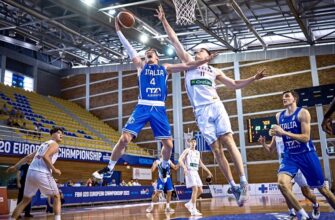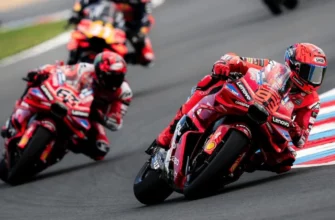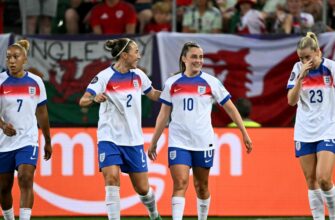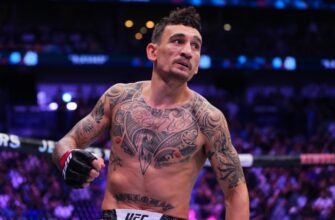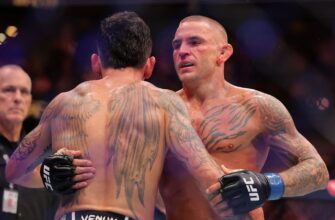The phrase “off-year” rarely applies to elite sports. For the U.S. Women`s National Team, 2025—a year devoid of major international tournaments—has proven to be anything but. Under the meticulous guidance of Head Coach Emma Hayes, this period has become a foundational crucible, an intense strategic endeavor designed to reshape the team from its roots upward, all with an unwavering gaze fixed on the 2027 FIFA Women`s World Cup and the 2028 Olympic Games.
Following last year`s Olympic gold in Paris, Hayes didn`t merely bask in the glow of victory. Instead, she immediately embarked on what can only be described as a comprehensive roster audit. Her mission: to expand the player pool significantly, offering meaningful, competitive experiences to a new generation of talent. The results, thus far, have been remarkably compelling. Young, dynamic players, thrust into the USWNT`s fiercely competitive ecosystem, have not just adapted; they`ve thrived, leaving indelible marks on matches and seizing every opportunity presented. Barely a year into her tenure, Hayes has already orchestrated a profound enlargement of the team`s talent base.
With nearly 50 players having donned the national team jersey across 15 matches since the last Olympics, Hayes possesses a formidable wealth of options. The recent 3-0 victory against Canada in Washington, D.C., marked the culmination of this extensive roster expansion. The focus now shifts from broad exploration to precise identification: pinpointing the elite 20-plus players from this expansive pool and, critically, cultivating the deep tactical chemistry required for peak performance on the global stage, with the World Cup looming less than two years away. While the precise schedule for the remainder of 2025 remains unconfirmed, a series of four to six matches are anticipated in the fall, aligned with FIFA`s international windows in October and late November/early December.
The Grand Experiment: Expanding the Player Pool
Hayes and her coaching staff have dedicated the better part of a year to identifying burgeoning talents, prioritizing their long-term potential for the 2027 World Cup or 2028 Olympics over immediate impact. This approach directly addresses a long-standing concern Hayes herself voiced: her “inheritance” of a relatively constrained player pool, stemming from what she perceived as an over-reliance on a veteran core. The timing couldn`t be more opportune, with a comfortable window of just under three years between the Paris Olympics and the World Cup in Brazil, allowing for player development at a measured, deliberate pace.
Nine months, 15 games, and 49 players later, Hayes now possesses an intimate understanding of the talent at her disposal. This familiarity serves as a robust foundation for her tactical blueprint for the next three years. The next critical phase will see the coach begin to solidify the core group, identifying the frontrunners for World Cup roster spots—decisions that could start taking shape as early as October. Crucially, the door remains open. Hayes has indicated that some players will gain valuable experience with the U-23 national team, a strategic move designed to maximize their playing time and provide further opportunities to impress for senior team consideration. It’s an astute method of intensifying an already competitive environment, a strategy Hayes views as indispensable to maintaining the USWNT`s elite status.
The Return of the Guard: Veterans and Their New Roles
During this experimental phase, Hayes intentionally prioritized integrating new faces, often foregoing the full Olympic gold-medal winning roster. While much of this was by design, some absences were necessitated by circumstance. Key players like Naomi Girma and Trinity Rodman battled injuries, while Mallory Swanson and Sophia Smith are navigating maternity leave. This has meant that the pecking order between established mainstays and promising newcomers is still evolving. The coming months will offer clarity, but early trends are discernible.
Since October, six of the seven players logging the most minutes were part of the gold-medal winning squad, with midfielder Sam Coffey and defender Emily Sonnett leading the charge. Yet, the trajectory isn`t universally upward. Midfielder Korbin Albert and forward Jaedyn Shaw, who were integral earlier in the year, transitioned to the U-23 team in June, while defenders Jenna Nighswonger and Casey Krueger haven`t featured since last year. The same applies to goalkeeper Casey Murphy, a longtime understudy to Alyssa Naeher, who hasn`t been with the team since a January training camp. This signals a calculated reintroduction: only veterans Hayes genuinely believes are on track for 2027 and 2028 will rejoin the fold this fall, indicating Hayes is now definitively stamping her vision on the team.
The Keeper Conundrum: A Wide-Open Net
Among the various positional battles, the starting goalkeeper role stands out as the most enigmatic. Since the Olympics, six different goalkeepers have seen playing time, including Alyssa Naeher in her final appearances before national team retirement. Their minutes have varied, with Mandy McGlynn currently leading with four games, closely followed by Phallon Tullis-Joyce with three, and Jane Campbell and Claudia Dickey each with two, while Murphy has one. This paints a vivid picture: Naeher’s succession is truly an open competition, with October’s matches poised to offer crucial insights into Hayes’ preferred shot-stopper.
Murphy’s surprising lack of recent playing time, despite her history as Naeher`s understudy, suggests Hayes has used the preceding 15 games for extensive experimentation. Hayes has publicly praised the group, noting Tullis-Joyce is “leading in that area at this moment in time in her age category” and describing Dickey as “probably the best performing goalkeeper in the NWSL this season.” The field is crowded, the stakes are high, and the decision will undoubtedly be one of Hayes` most impactful.
Forward March: Abundance in Attack
The formidable attacking trio affectionately dubbed the “triple espresso” (Rodman, Swanson, and Smith) haven`t played together since the Olympics. Yet, the USWNT has hardly struggled to find the back of the net in their absence. This underscores the team`s historical embarrassment of riches in forward talent, a trend poised to continue for generations. A new crop of players has made significant strides, most notably Alyssa Thompson. The 2023 World Cup participant ranks third in minutes played since the Olympics and boasts four goals and an assist, making a compelling case for a permanent starting role, regardless of the “triple espresso`s” return.
Thompson isn`t an isolated case. Yazmeen Ryan and Ally Sentnor have also carved out significant minutes, with Sentnor particularly impressing in her senior team debut, netting four goals and two assists in just 467 minutes—a remarkable goal contribution every 77.83 minutes. Catarina Macario, finally rejoining the group regularly after a long injury battle, has also been prolific with three goals and two assists in 391 minutes (a contribution every 78.2 minutes). Veteran Lynn Williams hasn`t missed a beat, leading the group in goal contributions with six goals and one assist. Each of these performers presents a strong argument for a starting position, creating what Hayes might ironically call a “good problem”—an abundance of top-tier talent requiring tough, but welcome, decisions for her staff.
Midfield Metamorphosis: Seeking Balance and Brilliance
Hayes has been notably judicious in distributing playing opportunities across the squad, but if there`s a poster child for the youth-focused project, it’s 18-year-old midfielder Lily Yohannes. The coaching staff has, quite rightly, exercised patience with Yohannes, who has played only 373 minutes since the Olympics. However, the next two years will be pivotal for both her individual development and the national team’s midfield dynamics. Yohannes’s recent move to OL Reign marks a crucial step in her club career, giving her ample time to fully realize her potential. All signs point to the 18-year-old becoming a transformative figure in the USWNT`s midfield, a unit that has openly struggled for consistent balance in recent years.
The team’s midfield has indeed felt unbalanced since the departure of influential figures like Sam Mewis and Julie Ertz prior to the pandemic-delayed 2020 Tokyo Olympics. Former coach Vlatko Andonovski also grappled with finding the optimal mix at the 2023 World Cup, a period during which the USWNT endured a frustrating 200-plus minute scoring drought. Even Hayes, despite Olympic gold, hasn`t definitively cracked the code for consistent midfield fluidity. Combinations involving Sam Coffey, Korbin Albert, Lindsey Horan, and Rose Lavelle have at times appeared disjointed, leaving room for improvement.
Sam Coffey appears to be a Hayes mainstay, having logged more minutes than any other player since the Olympics. Lily Yohannes is clearly a long-term investment for the 2027 World Cup. This leaves a relatively limited number of coveted midfield spots. Rose Lavelle, when fit, is almost certainly a starter, given her unique technical and attacking profile. The rapid ascent of 19-year-old Claire Hutton further complicates—or enriches—the picture, potentially forcing tough decisions, particularly concerning Lindsey Horan’s role. Horan remains a minute leader, ranking fourth since the Olympics, suggesting Hayes is unlikely to sideline her soon. The challenge lies in finding the ideal blend within this crowded, talented field. While Hayes benefits from the luxury of time, striking this delicate balance will undoubtedly be one of her most formidable, yet exciting, tasks.
In essence, Emma Hayes is not merely coaching; she is engineering a profound generational shift. The “off-year” narrative belies a period of intense strategic re-engineering, where every training session and friendly match is a piece of a larger puzzle. The USWNT is not simply rebuilding; it is evolving, meticulously crafting a new identity built on expanded talent, rigorous competition, and a clear vision for continued dominance. The road to 2027 and 2028 promises to be a captivating journey of innovation, tough choices, and the forging of a new American soccer dynasty.


